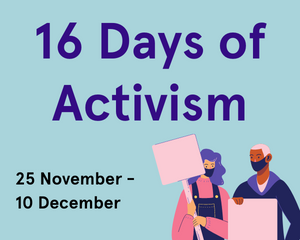In this challenge, we encourage you to learn more about the impact of sexism and gender stereotypes in the media.
Watch the trailer for Miss Representation. It explores the effects of gender stereotyping in the media. Send it to a colleague, friend or family member. Share the main message you took from it about violence against women.
You might have heard of the term ‘sexual objectification’. This guide includes five easy questions that can help you recognise it. Caroline Heldman created these questions. She discusses the topic in more detail in this TedX talk.
How does it help?
Research shows that being regularly exposed to media that sexually objectifies women contributes to sexist attitudes and gender stereotypes. In turn, this increases the likelihood of men’s violence against women.
Media, marketing and advertising can strengthen or challenge the attitudes that create gender inequality and enable violence against women.
Evidence shows that changing and challenging harmful and sexist media messages can help to prevent violence against women. This is because it promotes gender equality and diversity, and challenges gender stereotypes.
Keep going!
Keep taking action to recognise and challenge gender stereotypes in the media:
- Boycott films and TV shows that show gender bias and stereotypes.
- Make sure that the images and posters at your workplace/sports club/community group do not encourage gender stereotypes. If they do, say something about it!
- Challenge sexism in advertising.
- Check out Collective Shout. This grassroots Australian organisation challenges how women and girls are objectified and sexualised in media and advertising.
Please note that these clips/articles contain information regarding the topics of sexism, gender inequality and violence against women. If you find the information distressing, please click through for information and support on self care. If you or someone you know is experiencing violence, please visit the our help section for further information and support.
